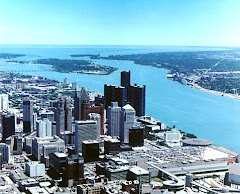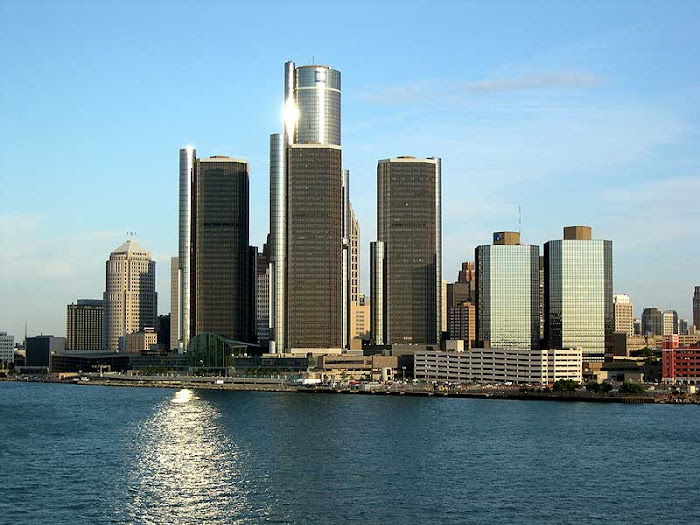 Built for William Fox (1879-1952) and the Fox Theatre chain, the Detroit Fox is the largest and most exotic eclectic Hindu-Siamese-Byzantine theater of the golden age of the movie palace (1925-1930). The Fox stands today, along with its 1929 twin, the Saint Louis Fox Theatre, as one of the relatively few remaining movie palaces in the country. It epitomizes the opulence and grandeur that characterized the era.
Built for William Fox (1879-1952) and the Fox Theatre chain, the Detroit Fox is the largest and most exotic eclectic Hindu-Siamese-Byzantine theater of the golden age of the movie palace (1925-1930). The Fox stands today, along with its 1929 twin, the Saint Louis Fox Theatre, as one of the relatively few remaining movie palaces in the country. It epitomizes the opulence and grandeur that characterized the era.Designed by C. Howard Crane and built in 1928, the Detroit Fox Theatre is the culmination of flamboyant movie palace architectural design. Crane, who had designed over 250 theaters by 1928, considered the Fox his best effort. In its size, ornate decoration and mechanical systems it was the premier example of what a movie palace could be. A 1928 Detroit Free Press article stated, "Detroit's Fox Theater has the largest clear span balcony in the world. The stage proper is larger than the Roxy Theater in New York, and has the largest and finest projection room and equipment of any theater in the world." Today, the Fox holds the distinction of being the largest continually operating theater in the country.
 The Fox Theatre near Grand Circus Park in downtown Detroit, Michigan was designated a National Historic Landmark on June 29, 1989. From the Roaring Twenties, it is one of the first theatres to feature live sound. Located within the Theatre in Detroit, this ornate performance center has 5,048 seats, (5,174 seats if removable seats placed in the raised orchestra pit are included). It is the second largest theatre in the country after the Radio City Music Hall in New York City. The Fox was fully restored in 1988.
The Fox Theatre near Grand Circus Park in downtown Detroit, Michigan was designated a National Historic Landmark on June 29, 1989. From the Roaring Twenties, it is one of the first theatres to feature live sound. Located within the Theatre in Detroit, this ornate performance center has 5,048 seats, (5,174 seats if removable seats placed in the raised orchestra pit are included). It is the second largest theatre in the country after the Radio City Music Hall in New York City. The Fox was fully restored in 1988.History
The Detroit Fox is the largest of the Fox Theaters. Built in 1928 for William Fox, founder of 20th Century Fox, it was the first movie palace to have live sound. The architect, C. Howard Crane, designed a lavish interior blend of Burmese, Chinese, Indian and Persian motifs. There are three levels of seating, the Main Floor above the orchestra pit, the Mezzanine, and the Gallery (balcony). The exterior of the attached 10-story building features an Art Deco facade, which at night is illuminated and can be seen for several blocks. The Fabulous Fox Theatre in St. Louis, Missouri is its architectural twin with about 500 fewer seats.
The Fox remained Detroit's premier movie destination for decades. By the 1970s the theatre was a grimy venue reduced to showing horror and Kung fu movies. Unlike other downtown theatres in the 70s like the Michigan, United Artist and Capitol the Fox managed to remain open. The 1980s brought new hope for the Fox when in 1984 Chuck Forbes, owner of State and Gem theaters, brought the prospect for renovation; however, he didn't complete his plans.
In 1988, the theatre's new owners, Mike and Marian Ilitch, fully restored the Fox at a cost of $12 million. Ilitch Holdings, Inc. is headquartered in the Fox Theater Office Building. The area of downtown near Grand Circus Park which encompasses Fox Theatre is some referred to as Foxtown after the theater . In 2000 Comerica Park opened and helped to revitalize the area along with Ford Field in 2002. The Fox is Detroit’s top venue for Broadway shows.
Productions
The Radio City Christmas Spectacular was an annual favorite from 1997 through 2005. The theatre was host to the WWE Hall of Fame ceremony on March 31, 2007, the night before WrestleMania 23, being held at nearby Ford Field. As well as The Condemned World Premiere the night before on March 30, 2007. Other live productions have included Sesame Street Live: Let's Be Friends, David Copperfield, Blue's Clues' Live! as well as show tours, such as Donny Osmond, Irving Berlin's White Christmas, Dora The Explorer! Live, and in April 2007, Go! Diego! Live! with Liz Coscia, after Sesame Street Live productions, in 1998-2008.

















